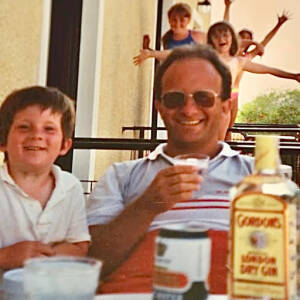Mephisto
In Hare Hill Park there is a small grave of Mephisto, a monkey who was a pet of the Newell family, who lived in Hare Hill House in the late nineteenth century.
Today, I listened for the first time to the first album by American "industrial rock band" Nine Inch Nails - "Pretty Hate Machine" (1989.) I chose this one because it was mentioned by a character in a novel I was reading. My Favourite track is Sanctified.
I watched a TV documentary about the artist Titian over the weekend. Quite by coincidence, I arrived at his work in the course of my University of Our House BA in Art History. Rather than one of his famous paintings of nude women, on which the TV programme concentrated, I chose to investigate his triple portrait of Pope Paul III and his Grandsons (1545).
In the sixteenth century, Popes were expected to be experienced in diplomacy and war, happy to use cunning and power. They therefore had to be worldly men not pious, studious clerics. Paul III had no scruples about that. He came from the lower aristocracy, with few links to the Curia, but came to attention when he sent his attractive sister "to have an affair with the Pope" (according to Martin Luther) and was made a cardinal in return.
Paul also kept a concubine, with whom he had three sons and a daughter. Although this outraged Luther, in Rome it was considered unremarkable because it preserved the "family line."
In this picture Paul is 77 years old and is seen with his two grandsons Alessandro and Ottavio Farnese.
Titian at the time was regarded as the leading painter in Southern Europe. He took considerable persuasion to leave his home and studio in Venice to paint the Pope in Rome. He accepted for two reasons - to satisfy his desire to see at first hand the archeological wonders of ancient Rome and because he was promised a lucrative church property, the prosperous abbey of San Pietro in Colle.
Close inspection shows that the painting was never finished. For example, the Pope's right hand is missing. It is thought that Titian never received the promised benefice. Also, there were shifting political allegiances. In 1544, when the canvas was begun, Spain was the Pope's main ally. When it was abandoned in 1545, the ally was now France. A major portrait would have been an official statement. The work was sent, unframed to the Farnese family cellars in Rome, where it stayed for over 100 years.

Comments
Sign in or get an account to comment.


